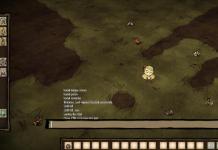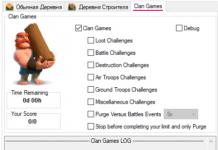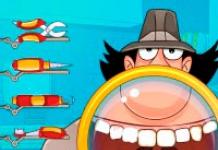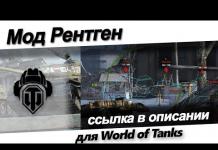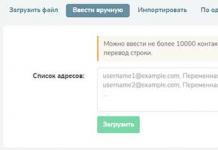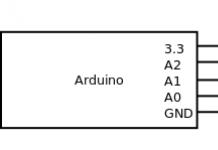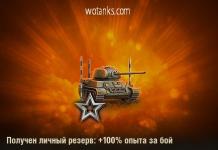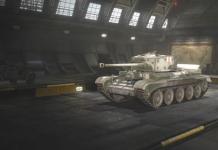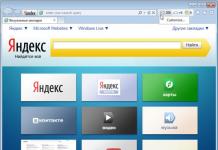This review provides a historical excursion into the tanks of the Var Thunder game, as well as how to play for a particular tank, recommendations and a lot of other valuable information. So, let's begin.
Tanks of the first era
BT-7 "Flying Tank"
This is a Soviet light tank of the 1937 model, equipped with a 45 mm cannon with 188 rounds of ammunition. The BT-7's auxiliary armament consisted of two DT machine guns.
This vehicle differed from previous modifications by a conical turret, changes in the transmission, strengthened wheel suspension springs, and strengthened track drive wheels. During modernization, the thickness of the frontal armor was increased to 22 mm, and the combat weight increased to 13.9 tons. A total of 4,827 BT-7 tanks of the 1937 model were produced.
The car is not bad, its main advantage is simply hurricane dynamics, not inferior to those of a real tank. Although it is quite difficult to reach a speed of more than 50 km/h. The disadvantages of this vehicle include weak bulletproof armor. The frontal armor of this tank is only 22 mm, which is very small, and can only protect against small-caliber automatic guns, and even then from a certain distance.
Historically, the vehicle was not intended to break through defenses, so it is highly not recommended to engage in duels with it. The best tactics for the BT-7 are attacking from the rear, shooting from behind cover, and dynamic shooting on the move. In general, the main thing for this tank is to stay out of the vulnerable zone.
T-60 "Ant"
.jpg) T-60
T-60
Our second in line is a Soviet light tank, equipped with a 20mm gun. The gun's ammunition capacity was 754 shells - that's 13 belts of 58 shells each. The vehicle was developed in August 1941 at Moscow plant No. 37 under the leadership of N. A. Ostrov, the leading developer of all light tanks in the USSR at that time.
The tank was produced from September 41 to February 43, when it was replaced by the more powerful T-70 light tank. The few T-60s that survived the battle were used as tractors, reconnaissance tanks and training vehicles until the very end of the war. In total, about 6,000 units of this equipment were produced.
The main disadvantage of the T-60 in War Thunder is that any flea can penetrate it. The very weak defense is compensated by the tank’s nimbleness and high maneuverability, which allows it to be a very inconvenient target for the enemy.
T-28 "Best in the World"
.jpg) T-28
T-28
Star of parades of the Soviet Union in the 1930s. At one time it was widely promoted on stamps and postcards. For its time it was the most powerful tank in the world. A medium tank of the pre-war period, equipped with an A-10 weapon of 76.2 mm caliber, with 69 rounds of ammunition. Four DT machine guns were used as additional weapons. The tank was created in the early 30s at the tank and tractor design bureau under the leadership of S. A. Ginsburg.
The T-28 is the first medium tank in the USSR to go into mass production. At the time of its appearance, it was the strongest medium tank in the world. This modification with the A-10 cannon was produced from 1938 to 1940. And in total more than 130 vehicles of this type were built.
What is the specialty of the T-28 in War Thunder? Despite its more than impressive dimensions, the tank is quite durable and can withstand a huge number of hits, thereby allowing it to remain in service for quite a long time without any serious damage. The disadvantage of the T-28 in the game, as well as in reality, is the low turret rotation speed. But overall the tank is quite bendable.
T-34 model 1940 "King of the Eastern Front"
.jpg) T-34
T-34
The most famous tank of the Second World War, which embodied the best achievements of the military industry of that time. Armed with an L-11 cannon of 86.2 mm caliber, with 77 rounds of ammunition. The vehicle's auxiliary armament consisted of two 7.62 mm DT machine guns.
This tank was developed under the leadership of M.I. Koshkin in the design bureau of the tank department of the Kharkov plant. This modification with the L-11 cannon was produced from 1940 to early 1941. The T-34 was one of the most successful tanks of the war, which became so as a result of the use of the latest highly economical aviation-type diesel engine - the B-2, thanks to which the medium, thick-armored T-34 received high power, ensuring the tank's superiority in maneuverability, maneuverability and reliability. A relatively small number of T-34s were produced with this gun - just over 450.
The advantage of the T-34 is its low penetration, ensured due to the large angles of inclination of the armor, due to which shells very often ricochet without causing significant damage to the tank. The second advantage is a fairly powerful gun. The disadvantage is the low rate of fire, which makes the T-34 unsuitable for shooting at fast-moving targets such as airplanes
ZIS-30 "Deadly Force"
.jpg)
Soviet light anti-tank self-propelled artillery unit (SPG) of an open type, quite sharply different from other vehicles presented in the game War Thunder, armed with a ZIS-2 cannon of 57 mm caliber. With 20 rounds of ammunition. It was developed at plant No. 92 under the leadership of designer P.F. Muravyov in the second half of 1941 by attaching a ZIS-2 anti-tank gun to the T-20 Komsomolets artillery semi-armored tank tractor.
These self-propelled guns were well received by the troops due to the effectiveness of the gun itself. However, due to the numerous breakdowns and combat losses, they did not have a noticeable impact on the course of the war. In total, about a hundred ZIS-30s were produced, which took part in the battles of 1941-42.
The disadvantage of the ZIS-30 in the game is its strong recoil and very low armor. More precisely, he has no armor at all. Absolutely anyone can break through it - you just need to hit it, but that's the whole problem. After all, the advantage of this machine is its nimbleness, lightness, and mobility. He moves very quickly from cover to cover, knocking the enemy off target. Well, the most important advantage of the ZIS-30 is its powerful gun. Not only can it penetrate almost any armor, but it also reloads quickly and is also very accurate when shooting even at very long distances. And finally, the last important aspect - at the time of writing this article, this self-propelled gun is the highest in combat rating, and this probably means something.
T-26 "Lenivets"
.jpg) T-26
T-26
The T-26 is a Soviet light tank of the 1939 model, equipped with a 20K cannon of 45 mm caliber. Its ammunition capacity was 205 shells. The T-26 is essentially a conversion of the Vickers Mk E tank purchased from the British.
The T-26 of this type was produced from 1939 to 1940. And it differed from the previous ones in the turret box with inclined armor plates, the removal of the rear machine gun, instead of which an additional combat rack for 32 rounds was installed, increased engine power and strengthened suspension. In total, about 2,000 tanks of this modification were built.
There is not much good to be said about this vehicle; after all, this is the initial combat vehicle when playing for the USSR. First of all, download ammunition on it, since initially T-26 shells have rather low armor penetration. The car drives quite slowly, which is very annoying, so pump up the suspension and tracks. But there’s no point in upgrading armor.
Tanks of the second era
SU-76M “Cardboard Killer”
.jpg)
Soviet self-propelled gun, armed with a ZIS-3 gun of 76.2 mm caliber and 60 rounds of ammunition. It was developed by the design bureau of plant No. 38 in the city of Kirov in the summer of 1942.
The main designer of the self-propelled gun was S. A. Ginsburg. The SU-76M modification was distinguished by the installation of an engine with increased engine life, as well as the absence of an armored roof for the armored compartment. It went into production in the summer of '43. And a number of such vehicles managed to take part in the Battle of Kursk. Production ended in 1944. A few years later, they were withdrawn from service by the Soviet army. In total, about 14 thousand of these self-propelled guns were produced.
The good thing about this tank is that it has a very powerful gun for its level, and the armor penetration shells can rival the T-34-57, not to mention the regular T-34. The tank's mobility is also excellent - you can go to the enemy's rear or side.
The main disadvantage of the SU-76M in Var Thunder is its weak armor. The frontal one is only 25 mm, and the side one is even less. In general, such armor can only protect from bullets. Another disadvantage is the low vertical aiming angle. The gun does not want to go down at all, which makes the tank unsuitable for firing from hills and other high positions.
SU-122 "Deadly High Explosive"
.jpg)
A self-propelled artillery unit equipped with a 122 mm howitzer and 40 rounds of ammunition. The beginning of its development was the GKO decree of 1942, obliging the Ural Heavy Engineering Plant and Plant No. 592 to urgently develop an armored self-propelled 122-mm howitzer to destroy enemy tanks and combat firing points.
The first prototype of such a self-propelled gun was built on November 30 at Uralmash and, due to the shortage of self-propelled artillery, was already put into mass production in December. This vehicle was one of the first serial self-propelled guns developed in the USSR. Its production ceased in August 1943 due to the transition to production of all SU-85 tanks, but even after that it continued to take part in battles until the very end of the Great Patriotic War. A total of 638 self-propelled guns were produced.
The main disadvantage of the SU-122 is its low rate of fire, which, however, was characteristic of all howitzer guns of that time. The smoothness of the ride also leaves much to be desired, but overall the tank is very powerful, well armored and formidable.
T-70 "Tarantayka"
.jpg) T-70
T-70
A light tank equipped with a 45 mm cannon and 90 rounds of ammunition. It was developed by a team of engineers under the leadership of N. A. Ostrov in November 1941 at the Gorky Automobile Plant and put into production in January 1942.
The T-70 was developed to replace the T-60. Unlike the latter, it had more impressive dimensions and more advanced weapons. It also had more advanced armor protection and increased power density. Serial production began in 1942 at the Gorky Automobile Plant. And also at plants No. 37 in Sverdlovsk and No. 38 in Kirov. However, following the results of the Battle of Kursk, the prevailing opinion was that this light tank was no longer needed by the Red Army and the emphasis shifted in favor of producing the SU-76M based on it. Therefore, in October 1943, the production of these devices was curtailed. In total, a little more than 8,000 units of this equipment were built.
The advantages of the T-70 include very good speed and dynamics even when climbing steep hills, almost impenetrable armor for the first ranks (with the exception of the use of cumulative ammunition at close ranges). The main disadvantage of the T-70 is the very low turret traverse speed. This is due to the fact that in reality the tank did not have an electric drive, and the turret rotated due to the muscular strength of the tankers.
T-80 “The best light tank in the game War Thunder”
.jpg) T-80
T-80
Another Soviet light tank, armed with a 45 mm cannon and 94 rounds of ammunition. It was created at the Gorky Automobile Plant in the fall of 1942 - just like the T-70, under the leadership of Ostrov. In December of the same year, the prototype of the tank passed successful tests. It was adopted and mass-produced at plant No. 40 in Mytishchi.
The main differences between the T-80 and its predecessor T-70 were the presence of a two-man turret, as well as the presence of a high gun elevation angle for anti-aircraft firing. The tank was produced until September 43rd, when it was replaced by the more preferable SAU-76M. In total, about 80 units of this equipment were produced.
The main advantage of the T-80 is the powerful turret drive and excellent vertical turret aiming, which makes it convenient for shooting from any angle and any position.
T-34 model 1941
.jpg) T-34
T-34
The tank is armed with a 76.2 mm cannon, with 77 rounds of ammunition. This is the second model of the T-34 tank, which appeared in 1941. Essentially, it was a 1940 model tank with a turret of rolled armor plate, equipped with a more powerful gun. In general, the body design remains the same.
The bulky hatch was also retained on the turret, but a box for servicing the gun was now installed on the right side of the tracked shelf, and the cast gun cradle was now replaced with a corner one, which was now bolted on. It is difficult to say exactly about all the changes to the tank, because its production was carried out at three factories at once, and each introduced its own changes. But they did not particularly affect the performance characteristics of the tank. It is also unknown exactly how many tanks of this modification were built, since tanks with a cast turret were also produced in parallel with the welded turret.
In general, in War Thunder it is the same classic T-34, only better. So it makes sense to choose it.
T-34-57 “Monument to Heroes”
.jpg)
The second Soviet medium tank, armed with a 57 mm cannon with 77 rounds of ammunition. Work on this tank began in the summer of 1940 - on the eve of the war. The department of the chief designer of plant No. 92 connected the barrel of the 57-mm ZIS-2 anti-tank gun with the cradle of the F-34 tank gun, thus obtaining a high-power gun - the ZIS-4.
Serial production of modified T-34s with this gun was not launched due to the excess power of the gun. As a result, only 50 units of this equipment were produced.
This vehicle was produced specifically to combat the new German Tiger tanks. Likewise, in the game War Thunder, he is quite good in firefights with these enemy vehicles.
This tank differs from other modifications of the T-34 in its higher rate of fire and simply excellent armor penetration for the second rank - it penetrates almost everyone without any problems. Even at a distance of one kilometer, it is capable of penetrating 90 mm armor.
.jpg)
The tank is named after Marshal of the Soviet Union Klement Voroshilov. Equipped with a 76.2 mm cannon with 116 rounds of ammunition. The first copy of this tank was manufactured at the Leningrad plant in August 1939. And from the beginning of the Soviet-Finnish war it was immediately sent to front-line testing. It was accepted into service on December 19, 1939.
Serial production of this tank began in February 1940 at the Kirov plant. In addition, on December 31 of the same year, the first KV was assembled, and the construction of a special building for their assembly began at the Chelyabinsk Tractor Plant. In August 1942, their production was discontinued. This tank became the founder of a whole series of heavy tanks of the Soviet Union. In total, a little more than 3,000 of these machines were produced.
The dynamics of the combat vehicle are not the best; it is not always possible to change direction, so which flank to push through or hold must be decided at the very beginning. The turret's rotation speed, as well as its downward rotation angles, leave much to be desired. In view of this, try to choose a direction along flat terrain without ravines.
But with the KV-1 reservation everything is great. Except for the stern. So the fastest way to destroy this tank is to approach from the rear.
Tanks of the third era
KV-1 (2) "Unstoppable"
.jpg)
Soviet heavy tank armed with a 76.2 mm cannon with 116 rounds of ammunition. Before this modification, the KV-1 was produced with the F-32 cannon, but due to the lack of these guns, tests of the new ZIS-5 gun were urgently carried out, and from October 1, 1941, they began to be installed on the tank. The main feature of this gun was the ability to aim in a small sector of horizontal aiming in a fixed position of the turret.
In addition to replacing the gun, there were also design changes. To protect the sides of the turret, a rather thick armor beam was welded. We increased the height of the additional armor sheet in the frontal part of the hull. Instead of three, only two boxes were installed on the fender shelves. In total, over the last 3 months of 1941, about 480 KV-1 tanks with this gun were produced.
KV-85 "Transitional shortness"
.jpg)
A heavy tank armed with an 85 mm cannon with 70 rounds of ammunition. This tank was developed by design bureau No. 100 in May-July 1943 under the leadership of Joseph Yakovlevich Kotin in view of the appearance of the heavy Tiger tank by the enemy. It was accepted into service on August 8. Serially produced at the Chelyabinsk and Kirov factories.
The KV-85 turned out to be a fairly successful transitional model to the powerful Soviet tanks of the IS family. It is worth noting that the idea of arming a tank with an 85-mm gun was proposed more than once at the early stage of the Great Patriotic War, but was invariably rejected due to excess power. However, with the advent of the ultra-armored Tiger, the idea was still approved. In total, 145 tanks of this type were eventually built.
The tank is quite long-suffering. Essentially, this is the KV-1, which they decided to lighten by weakening the armor and reducing the dimensions for the sake of speed characteristics. So try not to expose the hull, since most tanks at their level can easily penetrate it. And the turret from the IS-1 with good armor and a good gun allows the KV-85 to fight Tigers and Panthers. As for the dynamics, it's not very good.
SU-152 "St. John's wort"
.jpg)
A heavy artillery unit armed with a howitzer cannon with 20 rounds of ammunition. The first prototype of this self-propelled gun, called object No. 236, was completed at the Chelyabinsk Kirov plant on January 24, 1943. After testing on February 9, the new self-propelled gun was put into service. In the same month, serial production began, which continued until December of the same year.
The first combat use of this device took place in the summer of 1943 on the Kursk Bulge. Its firepower and good mobility made the SU-152 effective in battles with the new heavy German tanks. And naturally in the role of an assault gun and a self-propelled howitzer. She played the greatest role in the second half of 1943 and the beginning of 1944. Later, as the chassis wore out, the SU-152 was replaced with the more advanced ISU-152. A total of 671 units of this equipment were produced.
It is no coincidence that the SU-152 was nicknamed St. John's Wort; it was created specifically for the extermination of enemy Tigers and Panthers. But due to the low rate of fire, it turned out to be not as effective as we would like, because if you miss, you are unlikely to have a chance to correct yourself. In addition, no armor makes this tank vulnerable at any distance. A low turning speed is also not beneficial. In general, the main thing for this tank is to hit. It’s easy to hit, since he doesn’t shoot often, but if he does shoot, he’ll hit anyone.
Tanks of the fourth era
SU-100 "Tank Destroyer"
.jpg)
Soviet self-propelled gun with a 100 mm gun and 33 rounds of ammunition. It was developed at Uralmash at the beginning of 1944 as a significantly improved SU-85 for the destruction of German heavy tanks.
The SU-100 was put into production in August 1944. Its production continued until March 46th. In addition, in 1951 and 1956 it was produced in Czechoslovakia under a Soviet license. In total, about 4976 such installations were built.
Based on its characteristics, it is obvious that the SU-100 is an excellent tank destroyer; it is very mobile. High speed characteristics allow you to effectively move around the battlefield, coming to the rescue where needed. But aimed shooting is hampered by low vertical aiming angles, so the choice of terrain is very important for this self-propelled gun. The tank's armor is not the most powerful, but it's not entirely bad either. In general, in terms of armor, this is a strong average. It’s rare for anyone to be able to destroy it with one hit, but that’s not bad.
SU-85M "Transitional version"
.jpg)
A self-propelled gun equipped with an 85 mm gun, the ammunition load of which was 60 shells. It, like the SU-100, was created on the basis of the T-34-85 medium tank in the spring of 1944 as a transitional vehicle to the SU-100.
The SU-85 consisted of the SU-100 hull, armed with a cannon mounted on a conventional SU-85. This model also differed from the SU-100 in its travel mount, rotating mechanism, gun mantlet, sight and combat stowage for 60 rounds. The first self-propelled gun was released in July and continued until November 1941. In total, 315 self-propelled guns of this type were produced.
There's not a lot of good things to say about this tank. In fact, something between the SU-100 and SU-85.
SU-122 "Deadly High Explosive-2"
.jpg)
Another Soviet self-propelled gun, equipped with a 122 mm caliber gun and 30 rounds of ammunition. It was developed at plant No. 100 in December 1943, and mass production began in April 1944 at the Chelyabinsk Kirov plant and continued until 1945.
The SU-122 quite noticeably influenced the course of the Great Patriotic War, acting at its final stage as an effective tank killer. After the war, these self-propelled guns were actively supplied to Poland and Czechoslovakia as allied countries. Also, these devices were used sporadically by the Wehrmacht. In total, about 2,000 self-propelled guns of this type were built.
The tank has good initial armor penetration, as well as a powerful forehead, which makes it a very tenacious enemy.
SU-122S "Immortal"
.jpg)
Soviet self-propelled gun with a 122-mm cannon, the ammunition capacity of which was 30 shells. This device was developed at plant No. 100 in April 1944. Mass production began in the same month at the Kirov plant in Chelyabinsk, and ended in 1945.
In fact, the SU-122M was not much different from the SU-122. The main difference is the replacement of a gun with an increased rate of fire. A total of 675 combat vehicles were produced.
In general, it is essentially the same SU-122, only the original characteristics are slightly higher.
T-34-85 “Best modification”
.jpg)
Soviet medium tank armed with a ZIS-S-53 cannon with 60 rounds of ammunition. Plant No. 163 began the transition to the T-34 model with this gun in March 1944, when mass production of these guns was launched.
Production of the T-34-85 in the USSR was completed in 1946, but its production under license continued in Czechoslovakia and Poland, where its production continued until 1948. In total, about 65 thousand tanks of this series were produced.
In general, the T-34 in the game War Thunder has better dynamics. And this modification is no exception. This is the most versatile vehicle, quite effective in battles on any terrain and at any distance. Unlike previous modifications, the tank has improved firepower.
T-44 "Speed Tank"
.jpg) T-44
T-44
The second medium tank, armed with the same gun with 58 rounds of ammunition. The T-44 was developed at design bureau No. 183 in Nizhny Tagil under the leadership of A. A. Morozov in 1943-44.
The T-44 was put into production in July 1944. However, due to the congestion of production lines with T-34-85 tanks, few of these vehicles were produced during the war, and they were never able to actually take part in the war. However, its production continued until 1947. A total of 1,823 units of this equipment were built.
The car is very mobile, which makes the gameplay much more enjoyable - you are in time where you need to be in time. The turret's traverse speed is also quite decent, but the gun's downward aiming angles are not optimal. But even here the dynamics save us - we can roll out, shoot back and quickly roll back into the shelter, remaining unharmed. The armor, both frontal and rear, is at a very good level, considering that this is a medium tank. It's rare to send him to the hangar with one shot. In general, the T-44 is a fast and quite powerful tank for its class.
Shooting in sniper style at a distance of more than 500 meters is not justified for this vehicle, since penetration of a gun at such a range leaves much to be desired.
IS-2 "Best breakthrough tank"
.jpg)
Soviet heavy tank model 1943. It was equipped with a 122 mm cannon with 28 rounds of ammunition. This tank was essentially a further improvement of the IS-1 tank, which in turn was a modernization of the previous KV-1 model. Compared to the IS-1, the IS-2 had significantly improved weapons.
Tanks of this type were distinguished by a cast frontal part with a streamlined stepped shape. The IS-2 was the most powerful armored Soviet tank of the war and one of the most powerful tanks of that time. These tanks played a huge role in the battles of 1944-45, distinguishing themselves during the assault on cities. Assembly of the first vehicles began in November 1943, and in total about 3,500 IS-2 tanks were produced.
A very formidable tank in the game, capable of killing almost any enemy with the first shot.
Tanks of the fifth era
ISU-152 "St. John's wort-2"
.jpg)
Soviet heavy artillery self-propelled gun, which was equipped with a 152.4 mm howitzer with 21 rounds of ammunition. It was developed by Plant No. 100 in June-October 1943 under the leadership of Zh. Ya. Kokin, the main developer of the entire line of Soviet heavy tanks. The general designer of the self-propelled gun was Moskvin.
Mass production of the device began in November of the same year, and ended only in 1946. ISU-152 had a noticeable impact on the course of the Great Patriotic War at its final stage. After the war, they underwent modernization and were in service with the Red Workers' and Peasants' Army for a very long time. A total of 3,242 units of this equipment were built.
The main advantage of this vehicle in Var Thunder is its powerful long-range cannon. Among the disadvantages are low speed and sluggishness, which make the ISU-152 vulnerable to nimble enemy tanks. And of course, a self-propelled gun is not very effective in close-range combat.
T-54 “All living things die”
.jpg) T-54
T-54
A medium tank armed with a 100 mm gun and 34 rounds of ammunition. It was developed by plant No. 183 in Nizhny Tagil.
It was launched into production in 1947. However, due to constant breakdowns of these machines, in January 1949, it was decided to stop it. Only after significant modifications, namely the installation of a new turret, improvement of the frontal armor to 100 millimeters with an increase in the slope of the lower armor plate, as well as replacement of the tracks with wider ones, mass production resumed and continued until 1959. However, licensing in a number of other countries ended only in 1974. It is worth saying that this tank was exported and used in many post-war local conflicts. In total, a little more than 20 thousand of these tanks were produced worldwide.
100-mm T-54 shells easily and naturally turn almost any enemy weapon into a pile of iron. This tank is much better armored than the T-34 and is very effective in battles at any distance.
IS-3 "Heavy Average"
.jpg)
The Soviet heavy tank was armed with a 122 mm cannon with 28 separate-loading rounds of ammunition. Its creation began under the code name Kirovitz-1 at the end of the summer of 1944. And during the development of this project, many of the shortcomings identified by a special commission following the results of the Battle of Kursk were corrected.
The first batch of these tanks left the plant's workshops in May 1945, and production ended in mid-1946. However, they were not able to participate in the hostilities of the Great Patriotic War. But they took part in the Berlin parade of the Allied forces in honor of the victory in World War II on September 7, 1945. In total, 1,555 tanks of this type were assembled.
IS-4M "Immortal"
.jpg)
A heavy tank of the post-war period, armed with a 122 mm cannon with 30 rounds of ammunition. Work on its creation began in December 1943 at SKB-2 under the leadership of N.L. Dukhov. The base for it was the IS-2 heavy tank. After 3 years of design work and testing, it was put into service in April 1946.
However, its mass production was accompanied by poor build quality and design defects. The tank required improvement. And in August 1949, a batch of improved IS-4M tanks was released, after which serial production of the tank was completed. In general, the IS-4M tanks were never brought to fruition. They had low transmission reliability, low cross-country ability and maneuverability. The advantage of this tank was its very thick armor protection. A total of 258 of these tanks were produced.
War Thunder tanks video
This concludes the guide to USSR tanks. Which tank to choose in War Thunder, you decide. The next article will be devoted to the German tanks of this wonderful online game. Good luck!
As an avid fan of the appearance of German tanks, I spent a lot of time in World of Tanks. But at some point I abandoned this game - the gameplay became boring, and the local developers were too lazy. WoT's main competitor, War Thunder, recently received a major update that caught my attention. And for good reason - update 1.67 brought me back to tank games.
As mentioned, I haven't touched any tank games for about 2-3 years. During this time, World of Tanks has changed a lot (as far as I heard), but WarThunder has not stood still. I tried this game back in the day and didn't really like it, but now it's been refined and polished. First, a few words about the main gameplay.
Hardcore gameplay motivates you to become better
Initially, the big difference between World of Tanks and War Thunder was the hardcore gameplay in the creation from the company Gaijin. A less random penetration system and a realistic tank behavior system were implemented a few years ago, and over time it was all polished. On a heavy tank you can get a one-shot from a medium tank. This will scare many away from the game, but such a system motivates more to become better - it teaches you to use the features of the map for the so-called “positioning”.Experience shows that survival on the WarThunder map depends on the player's knowledge of the area and experience. You can take some kind of imba like the American T29 and stand so that one tower is visible, or you can carefully drive along the edge of the map and take the position of a sniper on a self-propelled gun. Variability is present, and its understanding comes gradually.
Regarding aircraft, I can say that I personally am not a fan of air battles. But in WarThunder they are, perhaps, implemented better than other games. A large selection of real aircraft models, dynamic gameplay and the same hardcore nature. After all, these same developers once worked on the IL-2 Sturmovik series.
Best Technique Update 1.67





From left to right: Ru 251, Sturmpanzer II, IS-6, 29-K and FV4005
It so happened that my favorite nation in tank games received some very good vehicles. The German branch has acquired an excellent premium tank Ru 251. A very fast machine that perfectly balances the entire line of German tanks. At mid-ranks, Germany has almost no fast vehicles that could quickly take positions in the first minutes of the battle. Now Ru 251 can do this.
This reconnaissance tank reaches speeds of up to 80 km/h in arcade mode, and even more in realistic mode. In a collision with even the most armored tanks, a penetrating gun, for which cumulative shells are available, will help. Of course, there is no smell of armor here, but the tank is agile and punchy. In the War Thunder 1.67 update, I liked playing Ru 251 the most.
Another new product in the German line is a self-propelled gun Sturmpanzer II. This funny self-propelled gun is a real killer and spoiler in its combat rating. All thanks to the 150 mm cannon, which fires powerful high-explosive shells. They will be fatal to any equipment you encounter in battles. The local eight-cylinder engine makes it easy to change position - the main thing is not to get under fire. A funny feature of the Sturmpanzer: the vehicle rolls back slightly after firing from its cannon - you can feel the power of the weapon. Little things like this add realism to the game.
Objective update imba - IS-6. This premium tank is definitely worth the money spent on it. This is a mobile heavy vehicle with good frontal armor and an excellent weapon. Its only weak point is the gun mantlet. The tank can easily one-shot into it, but experienced players are unlikely to expose this small area to attack.
The most interesting vehicle in the update from a gameplay point of view is the Soviet anti-aircraft gun 29-K. Essentially, this is a 76mm anti-aircraft gun mounted on the good old YAG-10 truck. This mix was actually used during the Great Patriotic War. On the battlefields of War Thunder, such an anti-aircraft gun brings a lot of pleasure to the game. Firstly, it is fast - you can quickly change your position. Secondly, its gun is very powerful - it penetrates almost everyone (except perhaps “Mouse”). And thirdly, it all looks quite funny and unusual.
The rest of the cars are typical average cars. The American T34 is much inferior to the imbricated T29. The "Barn" FV4005 is a fun vehicle that can punch through any tank in the game, but its gameplay will disappoint many with its huge turret without armor. They actually made fun of the Japanese a little by releasing the Type 60 ATM missile armored personnel carrier.
Single player mode for PvE
One big drawback of many multiplayer games is the lack of a good single player mode for farming local currency on bots. War Thunder recently got rid of this problem. The so-called “Storm” mode appeared. It can only be played on airplanes for now. You can play alone against bots or with friends or random players.
Guiana Plateau - a new map where you can farm bots by plane
The idea behind Sturm is this: in the case of airplanes, you need to protect your base from enemy bombers. Any equipment in the hangar participates. The developers encourage participation in the “Storm” with separate rewards - amplifiers for farming. Thus, you can farm bots to upgrade your equipment if you don’t want to bother too much in standard battles, where you can fly away from a one-shot.
The main thing in Assault is to kill bots as quickly as possible, but this is difficult to do. It is important to choose the right fast equipment with a good weapon. Otherwise you will face defeat. To be honest, the mode is not yet balanced, since the bots take out the base too quickly, and it is difficult to destroy enemy bombers, even if they are computer. “Assault” for tanks will appear soon.
What's the result?
All of the above is only part of the major update War Thunder 1.67. The first big update of 2017 brought many redesigned vehicle models - both tanks and aircraft. Two new locations have appeared - one for air battles, and the second for ground battles. And much, much more that makes me happy. The guys from Gaijin properly support their game by developing the all-in-one concept. Ships will soon be tested to join the planes and tanks.
Naval battles are already being tested
War Thunder is a multi-level game where everyone will find their favorite technique, their own play style and their own mode. However, the network code remained "with quirks". Several years ago, when I first got acquainted with this game, I saw flying tanks, overturned cars, and more. I saw this a couple of times in update 1.67. In general, this did not bother me much, since such bugs happened to other players.
We can also say that, compared to World of Tanks, the creation of the “snails” is much more hardcore, even in arcade game modes. This scares off a lot of players. But it is enough to spend about 50 battles, and even the most casual player will become an inveterate tanker and pilot.
War thunder has waited for the moment when battles take place not only in the air, but also on land!
This event will give everyone many hours of exciting tank battles that will bring admiration and a storm of emotions!
Therefore, today our topic is interesting and useful for many of you - tanks in the game War thunder.
You will take part in battles using World War II vehicles, try them out and even “feel” them, thanks to stunning graphics and physics. After all, it was the military equipment of those times that was considered one of the most universal and advanced.
From this article you will learn:
Development branches
- At the initial stages, players have access to two development branches, represented by combat vehicles of Germany and the USSR. Each of them includes different modification options for heavy, medium, and light tanks.
- Among German vehicles you can take control of the famous Panthers and Tigers. USSR technology will show off its T-34 and KV.
- Each tank can be upgraded using any of its modifications to improve it. It is also possible to modify additional elements - visibility, installing protective steel sheets on the tracks, reloading, and so on.
In a word, it is impossible to list all the options, there are incredibly many of them!
Features of combat vehicles
A review of tanks would not be complete without mentioning shells. They are qualified in various categories, ranging from sub-caliber to armor-piercing.
Steel equipment could not get by with modifications alone. Almost all aircraft functionality was transferred to tanks. This means that you can upgrade the crew, improve the conditions for conducting battles, and apply different color and graphic designs to the body of the vehicle. Each player can create their own real invincible battle monster.
The battle mode is arcade, but the developers assure us that other modes will soon become available.
Tank branches
Upgrading of equipment is carried out in stages. This starts with early models and ends with fast cars. Each tank has only its own model structure, characteristics, and behavior.
Some have excellent armor, others are extremely powerful. It’s not easy to understand every nuance, so it’s much easier to break in a steel horse in battle.
Players recognized the T-50, T-34-85, SU-100, T-54, IS-4 as the best tanks of the USSR.
Now a review of German War thunder tanks, there are several branches here. The equipment is represented by Czechoslovak vehicles, legendary tigers, the deadly Pz1VF2 tank, and panthers.
Mode
The main task of the player is to capture certain points and destroy opponents. There are three to five control points on the map. When you capture them, you receive points, while the enemy's points are reduced.
Each can deal more damage by calling in artillery support. It is important to simply correctly calculate the battle tactics in advance.
Browser battles take place in “garage” mode. This means that if you are destroyed, you can again choose your next tank. Rewards are awarded for damaging opponents, conducting a general battle, and individual shots.
How would you like to end our tank review?
Because you will only get the peak of excitement in battle. And believe me, this is an incredible feeling!
Already, this military equipment is gaining a lot of positive reviews on forums and an incredible number of views. The popularity of the game War Thunder is steadily increasing, it is rapidly becoming a leader!
Don’t waste time, join us and go to exciting battlefields with us, don’t forget to invite your friends! And since further expansion is planned, subscribe to our blog news so as not to miss anything important. That's all, bye-bye. Happy fighting!
We test ground equipment and make sure that tanks are in no way inferior to aircraft in terms of design
Send
The air part of the promising military arcade game from Gaijin Entertainment was released in the fall, and while players are mastering numerous aircraft, the developers are busy with the ground component. Then the turn of sea battles will come, but this is not soon. We played an early version of the “tank” WT. There's not much content at all - one map and six pieces of equipment. But certain conclusions can be drawn. If we use our imagination and imagine the developers’ idea embodied properly, in a few years we will get a huge-scale project that no other military simulator can compare with.
Unlike its competitors, War Thunder has a powerful trump card - all troops fight simultaneously on one map. It looked good in press releases and warmed the soul, but it was not entirely clear how necessary such a feature was. Co-op play has just become available in the beta version of ground vehicles, and it is already clear that the idea works and creates many unforeseen situations. Danger lurks not only on the ground, but also in the air: airplane pilots quickly learned to knock out tanks and pretend to be kamikazes, directing the vehicles directly at our equipment. Each flight of a steel bird a couple of meters from the tank can become fatal, which is why you watch with bated breath as the fighter begins to descend directly towards you. Unfortunately, there is nothing to oppose the tanks: they are helpless in the face of aviation, and all that remains is either to maneuver deftly or to ride away from the aircraft. In fact, in reality, a tank can shoot down a plane only in an extremely rare case, so there is no injustice here. In the first video dedicated to ground vehicles (shown on KRI "13"), a tank still shoots down a plane: the car drove up a hill, the gun was raised high. So far, nothing like this has happened, but we are not losing hope.
You can effectively counter aircraft from the ground with the help of anti-aircraft guns. In the closed beta test, a German car makes holes in the wings of metal birds from a decent distance, and in the near future the developers will add a Soviet anti-aircraft gun. For those who want to fight only with ground vehicles, a separate mode is being prepared in which there will be no aircraft.

The current version allows you to try out six cars: three Soviet and the same number German. If we omit the detailed characteristics, then self-propelled guns, medium and heavy tanks are presented. The difference in handling is noticeable; the class also sometimes limits movement options. On the presented map there is a rather steep slope leading directly to the key point. Instead of a long and dangerous trip along the road, it was decided to take a shortcut by climbing this unfortunate slope. And our heavy tank stopped literally a meter from the top edge, helplessly skidding its tracks and sliding down. It was annoying to watch how the lighter T-34 literally flew onto the slope and mockingly threw mud at us.

As for the behavior of the technology, everything is pretty good. You get used to the features quickly, but sometimes the tanks are easy to skid and almost drift on the gravel road. The slow rotation of the tower adds drama to the battles: when opponents notice each other, the count is literally a split second. Whoever manages to aim and fire a salvo will win. Tanks readily explode with one successful shot, so you need to take special care of your equipment. But remember: no one will provide protection from an aircraft diving on your tank. Damage is calculated in detail; the crew itself may suffer. In general, the relative fragility of the machines is only encouraging. Nobody shoots at each other for a minute: one shell, the second - and we move on.

The graphics left only pleasant impressions. The tanks look amazing - they're not cardboard, but they're not highly polished either. Slightly dented metal, ingrained dirt, the smallest details on the cases - never before has equipment looked so nice. The landscape is also pleasing to the eye: grass and bushes are crushed under the tracks, trees fall from being run over by cars. But for now it’s better to drive on the roads: once we planted a tank near some logs and got out of there with great difficulty. Another incident - the equipment suspiciously willingly turns over. One day I managed to heroically help a comrade by hitting his tank with my car while accelerating - and he got back on his feet. Don't forget: this is an early closed beta, and all bugs will be ironed out before release.


